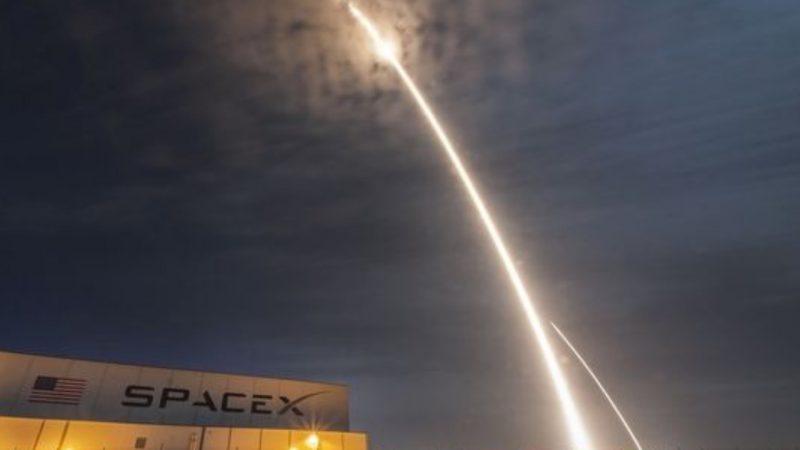
Elon Musk’s private spaceflight company SpaceX announced on February 27, 2017 that it has been approached by two (unnamed) indviduals, two private citizens, who will pay to be flown around the moon and back to Earth by late next year. SpaceX said the daring lunar journey will last “about a week” and travel deeper into space than any human has ventured before. The plan is to use a SpaceX Falcon Heavy launch vehicle and Crew Dragon spacecraft, launching from the Kennedy Space Center. Both rocket and spacecraft currently under development, and neither has yet flown. The Washington Post reported:
The announcement comes as many believe NASA, which for years has been on a ‘journey to Mars’ under the Obama administration, is increasingly focused on heading to the moon under Trump, who would like to make a splash in his first term.
A SpaceX mission in 2018 would likely circle the moon before NASA gets another chance.
SpaceX’s Falcon Heavy launch vehicle will be the most powerful rocket in the world when its development is complete. Its Crew Dragon spacecraft is designed to carry people and supplies to space.
Fly me to the moon … Okhttps://t.co/6QT8m5SHwn
— Elon Musk (@elonmusk) February 27, 2017
The full statement from SpaceX follows:
We are excited to announce that SpaceX has been approached to fly two private citizens on a trip around the moon late next year. They have already paid a significant deposit to do a moon mission. Like the Apollo astronauts before them, these individuals will travel into space carrying the hopes and dreams of all humankind, driven by the universal human spirit of exploration. We expect to conduct health and fitness tests, as well as begin initial training later this year. Other flight teams have also expressed strong interest and we expect more to follow. Additional information will be released about the flight teams, contingent upon their approval and confirmation of the health and fitness test results.
Most importantly, we would like to thank NASA, without whom this would not be possible. NASA’s Commercial Crew Program, which provided most of the funding for Dragon 2 development, is a key enabler for this mission. In addition, this will make use of the Falcon Heavy rocket, which was developed with internal SpaceX funding. Falcon Heavy is due to launch its first test flight this summer and, once successful, will be the most powerful vehicle to reach orbit after the Saturn V moon rocket. At 5 million pounds of liftoff thrust, Falcon Heavy is two-thirds the thrust of Saturn V and more than double the thrust of the next largest launch vehicle currently flying.
Later this year, as part of NASA’s Commercial Crew Program, we will launch our Crew Dragon (Dragon Version 2) spacecraft to the International Space Station. This first demonstration mission will be in automatic mode, without people on board. A subsequent mission with crew is expected to fly in the second quarter of 2018. SpaceX is currently contracted to perform an average of four Dragon 2 missions to the ISS per year, three carrying cargo and one carrying crew. By also flying privately crewed missions, which NASA has encouraged, long-term costs to the government decline and more flight reliability history is gained, benefiting both government and private missions.
Once operational Crew Dragon missions are underway for NASA, SpaceX will launch the private mission on a journey to circumnavigate the moon and return to Earth. Lift-off will be from Kennedy Space Center’s historic Pad 39A near Cape Canaveral – the same launch pad used by the Apollo program for its lunar missions. This presents an opportunity for humans to return to deep space for the first time in 45 years and they will travel faster and further into the Solar System than any before them.
Designed from the beginning to carry humans, the Dragon spacecraft already has a long flight heritage. These missions will build upon that heritage, extending it to deep space mission operations, an important milestone as we work towards our ultimate goal of transporting humans to Mars.
Over the past year, SpaceX has gotten increasingly successful at landing its Falcon 9 rocket upright. The video below shows the most recent landing on February 19, 2017.
SpaceX has been developing its Dragon spacecraft to carry supplies and crew. The video below features a look at a Crew Dragon (Dragon Version 2) spacecraft interior. Can you picture yourself aboard this craft, on your way to the moon?
Bottom line: Elon Musk of SpaceX announced on Februry 27, 2017 that the company has been approached by two private citizens who will pay for a trip around the moon and back.











